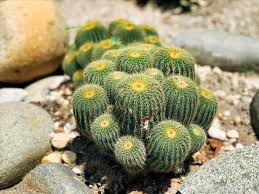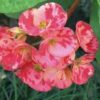Blue Willow China and the Art of Tea: A Perfect Pairing

Tea culture has a long and rich history that spans across cultures, from the East to the West, and has evolved into an intricate part of daily life and leisure. In this context, one of the most iconic symbols associated with tea culture is Blue Willow China, the beautiful blue-and-white porcelain that has graced tables around the world for centuries. Known for its elegant, timeless design, Blue Willow China is not only admired for its aesthetic appeal but also its deep cultural connections, particularly in the world of tea. Whether it’s part of a formal tea ceremony or a casual afternoon tea, the delicate yet striking patterns of Blue Willow perfectly complement the rituals and ambiance of tea drinking. In this article, we’ll explore the connection between Blue Willow China and the art of tea, and why this pairing is considered a perfect match.
The Legacy of Blue Willow China
Before diving into its relationship with tea culture, it’s important to understand the origins and enduring appeal of Blue Willow China. This distinctive pattern, first created in England in the late 18th century, is inspired by the Chinoiserie style, a European interpretation of Chinese design. The iconic blue-and-white color scheme has long been synonymous with traditional Chinese porcelain, and the Blue Willow pattern was designed to evoke the mystique and beauty of the Far East.
The design features intricate imagery that tells a story: a romantic tale of two lovers, Koong-se and Chang, whose love is forbidden by Koong-se’s father. The design includes a willow tree, a pagoda, a bridge, and birds, all elements that symbolize various aspects of Chinese folklore. This visual narrative, paired with the stunning artistry, makes Blue Willow China not just a functional item but a piece of art that conveys emotions, history, and culture.
This mix of elegance, storytelling, and craftsmanship has made Blue Willow China a beloved fixture in homes and collections around the world, especially in the context of tea drinking. The very act of pouring tea from a Blue Willow teapot or sipping from a matching cup adds an element of ceremony, making the tea experience all the more enjoyable and meaningful.
Tea Culture Around the World
Tea drinking has deep roots in various cultures, particularly in countries such as China, Japan, England, and India. Each culture has developed its own unique customs and rituals surrounding the preparation and enjoyment of tea. In China and Japan, for example, tea is seen as an art form, with elaborate tea ceremonies that emphasize mindfulness, respect, and connection with others. In England, tea has become an integral part of daily life, particularly in the form of afternoon tea, where tea is served with snacks such as scones, finger sandwiches, and cakes.
Tea drinking is also a social activity, often accompanied by conversation and companionship. Whether in a formal setting or during casual gatherings, tea serves as a medium for relaxation, introspection, and conversation. This is where Blue Willow China becomes an essential part of the tea-drinking experience.
The Role of Blue Willow China in Tea Ceremonies
In both Eastern and Western tea traditions, the items used to serve and drink tea are important to the overall experience. The teapot, teacups, and saucers play a significant role in the ceremony, contributing not only to the aesthetics but also to the atmosphere and ambiance. Blue Willow China, with its timeless design, adds an air of refinement and sophistication to tea rituals, whether it’s a Chinese Gongfu tea ceremony, a Japanese Chaji tea ceremony, or a more casual English afternoon tea.
For example, in Chinese tea ceremonies, the teapot and cups are often viewed as an extension of the tea maker’s skill and a way to honor the tea itself. The simple elegance of Blue Willow China enhances the experience by providing a visually appealing vessel in which to serve and drink the tea. The detailed imagery on the surface of the cups and teapot invites guests to appreciate the artistry, adding another layer of appreciation to the ritual.
Similarly, in the Japanese tea ceremony, every aspect of the experience is carefully curated, from the selection of the tea to the utensils used. Blue Willow China, with its delicate craftsmanship, can easily complement the serene and meditative atmosphere of a Japanese tea ceremony. The beauty and craftsmanship of the Blue Willow pattern not only enhance the aesthetics but also add a sense of timelessness, linking the past to the present.
In England, Blue Willow China has been a staple of afternoon tea for centuries. The elegant design of Blue Willow teapots, teacups, and plates makes it an ideal choice for serving tea to guests. The pairing of Blue Willow China with finger sandwiches, scones, and clotted cream creates an inviting and luxurious setting that elevates the tea-drinking experience.
The Symbolism of Blue Willow in Tea Culture
One of the reasons why Blue Willow China pairs so beautifully with tea culture is the symbolism embedded within its design. The Blue Willow pattern tells the story of eternal love, with the lovers Koong-se and Chang transformed into doves, symbolizing peace and unity. This theme of love and harmony aligns well with the values of tea culture, which often emphasizes mindfulness, tranquility, and connection with others.
In tea traditions around the world, tea serves as a medium for connection and reflection. Whether it’s the peaceful solitude of enjoying tea alone or the shared experience of a tea ceremony with friends and family, tea brings people together and encourages deep thought and conversation. The Blue Willow pattern, with its depiction of enduring love, peace, and unity, reinforces the values of tea culture, making it the perfect visual accompaniment to these rituals.
Furthermore, the natural imagery in Blue Willow, such as the willow tree, birds, and flowing water, evokes a sense of serenity and harmony with nature. This connection to nature aligns with the calming effects of tea and the mindful practices that are integral to many tea cultures. The design of Blue Willow China serves as a reminder of the beauty and tranquility found in the natural world, reinforcing the calming, meditative qualities of tea.
Blue Willow China as a Conversation Starter
Beyond its aesthetic appeal, Blue Willow China also serves as a conversation starter during tea gatherings. Its intricate design and the story behind it provide an opportunity to engage guests in discussions about its origins, symbolism, and historical significance. This aspect of storytelling adds a layer of depth to the tea experience, turning a simple tea-drinking ritual into an opportunity to share knowledge and connect with others.
In many cultures, tea time is about more than just the beverage itself. It’s an opportunity to engage in conversation, share stories, and build relationships. Blue Willow China, with its rich history and evocative design, enhances this social aspect of tea drinking by offering a visual focal point that sparks conversation and invites reflection.
Blue Willow China in Modern Tea Culture
While Blue Willow China is deeply rooted in tradition, it has also found a place in modern tea culture. The timeless appeal of the blue-and-white design makes it a versatile addition to contemporary tea settings. Whether it’s an intimate gathering with close friends or a larger celebration, Blue Willow China adds a touch of elegance and sophistication to any occasion.
In today’s world, where tea-drinking traditions continue to evolve, Blue Willow China remains a beloved choice for tea enthusiasts and collectors alike. The combination of its visual beauty, cultural significance, and versatility ensures that Blue Willow continues to be a treasured companion to the art of tea, transcending generations and geographical boundaries.
Conclusion: A Perfect Pairing
Blue Willow China and tea are a match made in cultural heaven. The rich history, timeless beauty, and symbolism of Blue Willow complement the ritual and significance of tea drinking in various cultures around the world. Whether part of a formal ceremony or an informal afternoon tea, Blue Willow China adds elegance, sophistication, and a sense of tradition to the tea-drinking experience. Its delicate design, paired with the rich, flavorful tea, creates a truly memorable and meaningful moment, making it the perfect companion for any tea lover.

